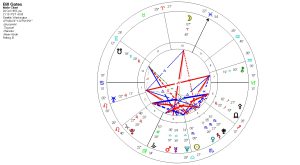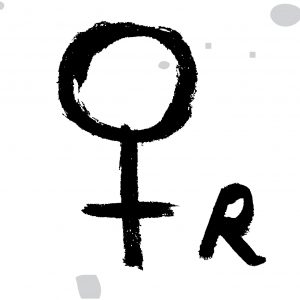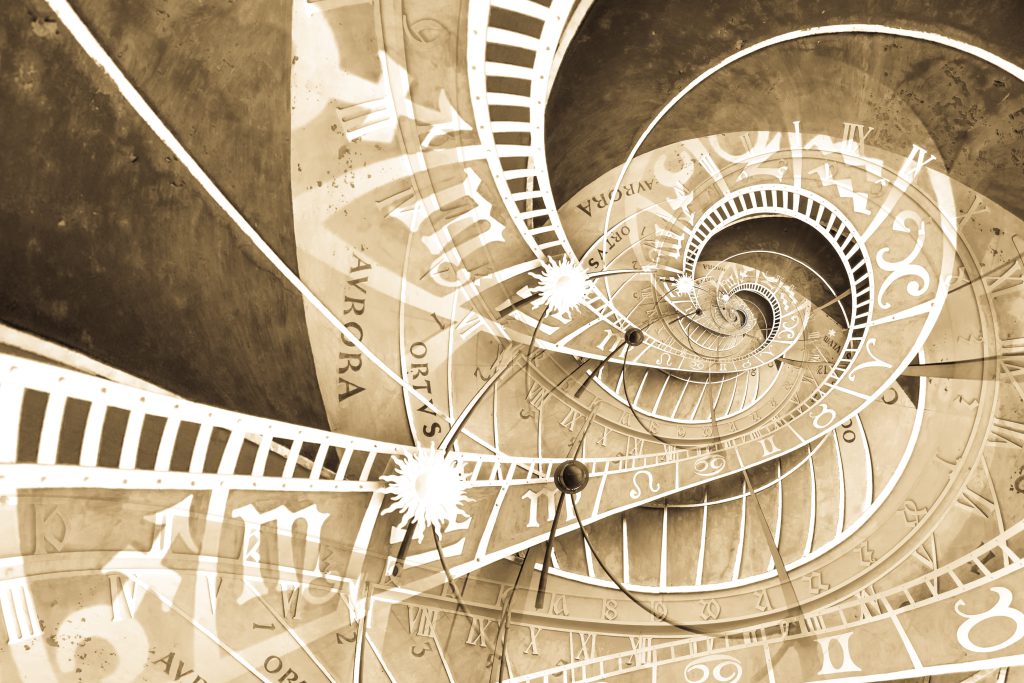The significance of some karmic features in relational astrology
When thinking about what karmic astrology means to me, I like to go back to the thoughts of Alice Bailey and Bruno Huber who already in the early part of the 1900´s claimed that an astrological reading requires several charts to be able to provide a full description of a person and soul as a complete being. The ability to use “karmic” methods, has opened new ways for interpretating inherited patterns of behavior, either seen as merely karmic or psychological inheritance that serves as an inner makeup of the personality. To ignore these features in the charts could therefore lead to missing important key factors that might play out – especially when considering close relationships.
Today there´s a lot of emphasis on astrology going back to it´s roots. Simultaneously some of the important features we need to address in modern astrology are that it is not that old and has developed merely during the last decade together with psychological astrology. Some of theese are experiencing a renaissance, thanks to an increasing interest in the so called karmic and psychological fields of astrology, together with an interest in the middle European astrological schools of thought.
Seven karmic patterns not to be overlooked in relationship patterns
What we today consider to be karmic material in astrology is often worked with through key relationships. As an example, I would like to mention, that the nodal axis in the chart, that’s often associated with the souls journey, have been seen as connecting from one generation to another. Karmic features might roughly be divided into different types and the concept signifying different themes to different people, but in general it is usually involving other people in our life. Starting with the childhood family and from there expanding through friendships and into our romantic relationships, we find theories concerning different kinds of soul contracts and soul groups that incarnate together and have unique quests to complete with each other. No matter if that is something to take interest in, we can acknowledge that relations hold a crucial part of our learning and developing. With karmic astrological techniques we are have the possibility to study many parts of, and different additional charts, sometimes even without having access to a specific birth time. In a mundane chart analysis, none of these or a just a few are necessarily included or even given much attention.
Lacking elements
To start off with what is lacking, in our romantic relationships we tend to be drawn to people who have something that we are lacking in our own chart. We are searching for an element or quality we need to develop or balance. According to some karmic theories a lack of element can roughly operate in two ways, either as inherited and still within us as a gift, ready to use when activated, or adressing thar there has been issues with balancing this element in a previous lifetime that now crave attention. Occasionally you see charts that show a complete lack two two elements planitarywise. As astrologer Janis Huntley pointed out, ( I her book Astrological Voids,) would it not affect You if You where born without for example a limb? Well of course it would, and therefore the missing pieces in the chart need our attention.
With the lack of basic elements there´s also a possibility that the person puts a lot of emphasis on the themes connected to that particular element. Like there would be some unconscious need to express or develop those features during this lifetime. If we take an example, Bill Gates is lacking the element of earth in his chart but still managing well with that side of life. The lack doesn´t necessarily need to be a trait that we cannot manage.
Gates has the North Node in the 6th house that´s an earth house, and the Moon in 10th He has managed to bring the earth themes into his life without the extra help from the element itself. Stephen Arroyo mentions the importance of element division in relationships in his book Astrology and the Four Elements. When checking Melinda Gates (Bills wife) element division, we find no less than 4 planets in earth signs.

Unaspected Planets
There´s other significant karmic placements that´s good to notice when wanting to understand relationship dynamics. An unaspected planet is usually viewed as karmically charged. It might also play out in a rather complex manner in relationships. As an astrologer might question the techniques used, how do I then define an unaspected planet? My answer to this is; as not having more than 1 Ptolemaic aspect, one main aspect, not concerning minor aspects or aspects to the axis or nodes.
Here we are dealing with a very raw and free kind of energy that often seems to find strong connections and activation through another person’s planetary aspects. Behaving like a lonely Iceland in the chart, wanting and simultaneously not wanting to be connected. With a planet like this, the partners role becomes crucial. The aspects of the other person helps to acknowledge and to regulate, in this way assisting the planet to express the gifts and traits through the partner planets aspects. The unaspected planet traits might somewhat be hidden under a surface of insecurity, or acted out in an on and off style, not having the aspects needed for making the energy more balanced. Because of the highly unconscious process, the partner might experience that by just being there, they find themself becoming a form of catalysator, unlocking these traits – like a secure cliff that is hanged on to while exploring the surroundings.
While unaspected planets might be quite rare, they are still worth the attention. One reason is that they might occupy or demand a kind of own stage or platform, operating like a blind spot for the person himself but not necessary for the surroundings. Throughout relationships this planet will undergo its own karmic process of development – from infant to teenager to an individual, and evolve and become more consious with trough interactions.
Sometimes this might be experienced as highly confusing, because of that planet mainly shows itself in the presence of others or by transits. Both astrologers Huntley and Hamaker-Zondag who studied these planets describes them as somewhat complicated. From Huber’s perspective, there´s a method of working with such a planet starting with identifying the level of awareness of it´s themes in the chart.
What´s also important to acknowledge is that unaspected planets are not bad, unfortunate or evil in any way, they are sometimes just not seen or attended to. They contain important shadow material and demand our attention, especially when entering the stage in relational astrology. While the pattern might seem confusing for both persons involved, simultaneously the unaspected part and interesting part of the psyche might contain qualities that the person hasn´t yet unlocked in themselves but awaits development.
To make it short, what might we then expect from the unexpected? To give You a few very short examples connected to each planetary theme:
Sun; identity and recognition. Moon; a search for the emotional attachment, to be wanted. Mercury; intellectual connection and expression. Venus; what love is, affection. Mars; instinct desires, strength an power. Jupiter; expansion, opportunities. Saturn; boundaries and discipline. Uranus; excitement and freedom. Neptune; a dream and harmony. Pluto; power and control.
Now this does not mean that the person is striving to become the essence of the unaspected planet qualities, but these themes might be of special importance, and sometimes even manifesting from the outside world.
As I mentioned earlier, it´s important to remember that these planets aren´t only activated in relationships, they are picked up also by the outside world, and that´s why some persons with unaspected planets get involved in things that really does not seem to have anything to do with them, but rather as being part expressions or catalysts for a greater meaning. Circumstances involving the activation of unaspected planets are teachers on a grand level, sometimes even over lifetimes.

Personal Retrograde Planets
As already the ancient people noticed, planets sometimes seem to slow down, stand still or turn retrograde, which provides them with a special energy field in the chart. This is however an optical illusion and is not occurring in reality. Especially in close relationships we tend to bring in the personal retrogrades Venus, Mars and Mercury, that procentually less often retrograde compared to the outher planets. When these are retrograding in a birth chart they will not behave as a straightforward moving planet, therefore directly affecting the persons way of interacting. These planets are quite easy to spot in the chart, even in the absence of a birth time. Venus is perceptually the least common, followed by Mars and Mercury. Karmically we are dealing with a possibility to go deeper into the themes of a retrograde planet, like a kind of specialization in it´s subjects in this lifetime. Sometimes there might be certain specific issues concerning relationships, or the possibility to attract partners that also have personal retrograde in their own birth charts, like there would be a meeting of souls continuously working on a specific tasks together.
Astrologer Martin Schulman described and divided these planets into phases of three and also given them detailed descriptions by house and sign position. Dane Rudhyar divided Mercury and Venus retrogrades into the morning and evening star phenomenon, giving them special features depending on which one being the case rising before the sun in the chart. What I here would like to stress is that these planets work in a different manner than the direct ones and might therefore be of interest when examining the relational patterns in life.
For a retrograde Venus person, the expression of Venusian qualities might be different than what the existing society demands, for Mercury the thinking patterns and the communication of ideas might differ and for Mars the assertion of willpower or set of boundaries not so simple to express. This might in all cases lead to a feeling of aloofness that might also lead to withdrawal or insecurities concerning the planet theme in question. Because of their importance in personal relations, it´s crucial to identify and address to this behavior on an individual level. Retrogrades are not malfunctioning planets, but rather in need of some deeper understanding and adjusting. Concerning personal retrogrades there´s also a possibility that the soul has previous lifetime experiences from a culture that is totally different from the one where this life takes place, or remembrance of painful experiences in the area of the planet involved.
Stationary Planets
Sometimes, a person seems to have a strong theme present in their life that can´t be explained by other tools available and then it might be good to also consider the option of stationary planets. One of the technical problems with these is that they might require a search into the manual ephemerid tables. This also goes for the astrological software, sometimes a planet is marked as stationary, but to be really sure about that I would still confirm it manually. When the retrogrades might be seen as a specialization, the stationary might be more about acuteness of themes. Astrologer Ray Grasse describes these planets as having “a hot iron effect” in the chart, also concerning aspects. There seems to be a difference between the beginning of the retrograde phase (marked S, SR) or in the end of it (marked SD). The planet themes are often highlighted in an urgent fashion throughout life. Here we might also find talent and already deeply developed knowledge. If we take an example, the late singer and songwriter Amy Winehouse had Venus stationary in the birth chart.

I don´t think there´s any doubt about that Venusian themes were present in Winehouses life. If we view Venus as the planet of love and of pleasure her lifestyle and choice of partner played an important role in her life. She was also a clearly talented and highly unique individual, that might have felt that her place in society wasn´t always the one she really understood. Venus being in the first phase of its´s retrogradation (S) that is often seen as an indication of stronger stationary impact. Like she put it herself “I love to live and I live to love”.
(To be continued in part II)
References:
Andrieu Irène, Astrologie, clé des vies antérieures; L’interprétation des noeuds lunaires en astrologie karmique ( Editions Dangles 1984)
Andrieu Irène, Lecture karmique du théme natal (Editions du Rocher 1999)
Grasse Ray, Under a Sacred Sky: Essays on the Practice and Philosophy of Astrology (The Wessex Astrologer Ltd 2015)
Gray Margaret & Arman Diaz, Relationship astrology lectures programme (2020)
Hall Judy, Karmic Connections ( Wessex Astrologer Ltd 2001)
Hamaker-Zondag Karen Drs., The Yod Book, Including a Complete Discussion of Unaspected Planets (Weiser Books; 1st Edition 2000)
Huber Bruno and Louise, Aspect Pattern Astrology (Hopewell 2019)
Huber Bruno and Louise, Moon-Node Astrology (Hopewell 1995)
Huntley Janis, Astrological Voids, Elements of Astrology (Element Books Ltd 1991)
Urmas Maija, Astrologia ja Karma (Tampereen Astrologinen Seura 1998)
Wolf Green Jeffrey, Pluto volume 2 (The Wessex astrologer 2015)
Schulman Martin, Karmic Astrology Vol I-IV ( Samuel Weiser Inc.; First Edition 1977)
Sullivan Erin, Retrograde Planets Traversing the Inner Landscapes (Weiser Books; 2nd Revised ed. edition 2006)
Sundell A, Vile´n J, Wiik L, Karma-astrologian avaimet (Basam Books 2021)

